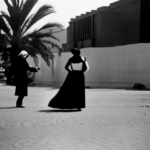One-line Summary:
Queen Margot is a historical novel by Alexandre Dumas that tells the story of the tumultuous marriage between Marguerite de Valois and Henry of Navarre during the French Wars of Religion.
The Plot:
Set in the late 16th century, Queen Margot takes place during a time of religious conflict in France. The novel follows the life of Marguerite de Valois, the daughter of Catherine de’ Medici and sister to King Charles IX. Margot, as she is commonly known, is a beautiful and intelligent woman who becomes entangled in the political machinations of the French court.
Margot’s mother arranges her marriage to Henry of Navarre, a Protestant prince, in an attempt to bring peace between the Catholics and the Huguenots. However, their marriage is far from a happy one. Margot is in love with the dashing La Mole, a Catholic, and Henry has his own affairs. The couple’s relationship is further strained by the ongoing religious conflict and the plotting of various factions at court.
As the tensions between Catholics and Protestants escalate, Margot finds herself caught in the middle. She becomes a pawn in the power struggles between her mother, her brothers, and the various nobles vying for control. Margot must navigate a treacherous landscape of betrayal, violence, and deceit in order to survive.
The Themes:
Love and Betrayal:
Queen Margot explores the complex nature of love and betrayal. Margot’s love for La Mole is passionate and all-consuming, but she is forced to betray him in order to protect herself and her family. Similarly, Henry’s infidelity and political ambitions strain his relationship with Margot. The novel raises questions about the sacrifices one must make for love and the consequences of betrayal.
Religious Conflict:
The religious conflict between Catholics and Protestants is a central theme in Queen Margot. Dumas vividly depicts the violence and chaos of the French Wars of Religion, as well as the deep-seated animosity between the two religious factions. The novel explores the devastating impact of religious intolerance and the ways in which it can tear families and nations apart.
Power and Politics:
Queen Margot is also a story of power and politics. The characters in the novel are driven by their desire for power and will stop at nothing to achieve their goals. The court of Catherine de’ Medici is a hotbed of intrigue and manipulation, where alliances shift and betrayals abound. Dumas skillfully portrays the corrupting influence of power and the lengths people will go to in order to gain and maintain it.
Key Takeaways:
- Love and loyalty can be tested in times of political turmoil and conflict.
- Religious intolerance can have devastating consequences for individuals and society.
- Power and politics often lead to betrayal and manipulation.
A Memorable Quote:
“Love, which is quickly kindled in the young, smolders long in the old.” – Alexandre Dumas
In Queen Margot, Alexandre Dumas weaves a gripping tale of love, betrayal, and political intrigue against the backdrop of the French Wars of Religion. The novel explores the complexities of human relationships and the destructive power of religious conflict. Through the character of Margot, Dumas presents a strong and resilient woman who must navigate a treacherous world in order to survive. Queen Margot is a timeless story that continues to captivate readers with its rich historical detail and compelling narrative.










